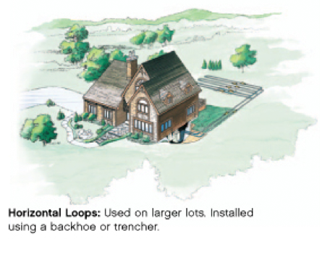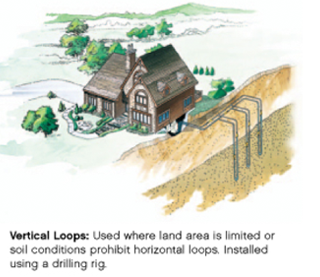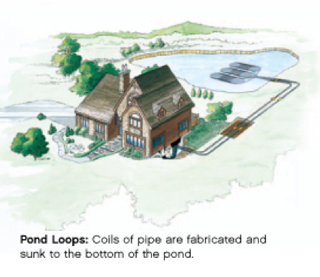GEOTHERMAL HEATING AND COOLING
The Clean, Green Alternative
One of the newest and most exciting developments in home heating is geothermal heat. Geothermal Energy is one of the "Greenest" ways to provide heating and air conditioning for your home. We specialize in everything geothermal including horizontal, vertical, pond and well water loops, geothermal heat pumps and radiant systems.
What Is Geothermal Energy?
Geothermal energy is the heat from the Earth. Its clean and sustainable. Resources of geothermal energy range from the shallow ground to hot water and hot rock found a few miles beneath the Earth's surface, and down even deeper to the extremely high temperatures of molten rock.
Almost everywhere, the shallow ground or upper 10 feet of the Earth's surface maintains a nearly constant temperature between 50 degrees and 60 degrees F. Geothermal heat pumps can tap into this resources to heat and cool buildings. A geothermal heat pump system consists of a heat pump, an air delivery system, and a heat exchanger-a system of pipes buried in the shallow ground near the building. In the winter, the heat pump removes heat from the heat exchanger and pumps it into the indoor air delivery system (ductwork). In the summer, the process is reversed, and the heat pump moves heat from the indoor air into the heat exchanger. The heat removed from the indoor air during the summer can also be used to provide a free source of hot water.
Loops can be installed horizontally or vertically in the ground or submersed in a pond or lake. Some typical types of loops include:

Horizontal Ground Loops
These are usually the most cost effective provided your land as sufficient space available, and is easy to dig. Trenches are three to six feet in the ground, then parallel plastic pipes are placed in the bottom. Usually you will need 400 to 600 feet of length for every ton of heating and cooling capacity. While it’s easiest to install horizontal loops in new construction, there are horizontal boring machines that allow the loops to be retrofitted with minimal disruption to existing lawns, and even under buildings and driveways.

Vertical Ground Loops
Where land is at a premium, vertical ground loops may make more sense. Vertical holes 150’ to 450’ deep are drilled, and a single loop of pipe is put into each hole. Those pipes are then connected to a horizontal pipe, also underground, which carries the fluid to the geothermal heat pump. Vertical loops can cost more than horizontal loops to install, but because the Earth is cooler in summer and warmer in winter at deeper depths they often require less piping, making them space efficient.

Pond Loops
If you have a pond or other body of water on your property, pond loops can be very economical. Pond loops use submerged sections of piping to circulate fluid. Water levels must remain at least 8 feet deep at their lowest level for efficient use of pond loops, but the system does not damage aquatic life and may be an affordable option.

Open Loop Systems
Open loop systems can be cost effective in areas with plentiful ground water, but they are used fairly infrequently for typical geothermal heating and cooling systems. They do require wells and may need special permits, so local environmental offices must be consulted before an open loop geothermal system can be considered. Another option, a Standing Column Well System, is sometimes used (particularly in the Northeastern region) but again, permits and local zoning must be consulted to determine if such a system is viable in your area.





